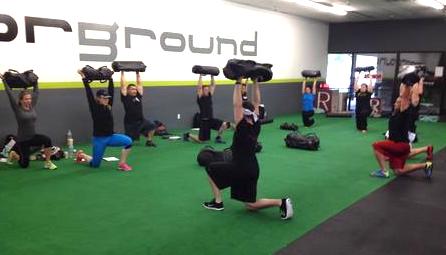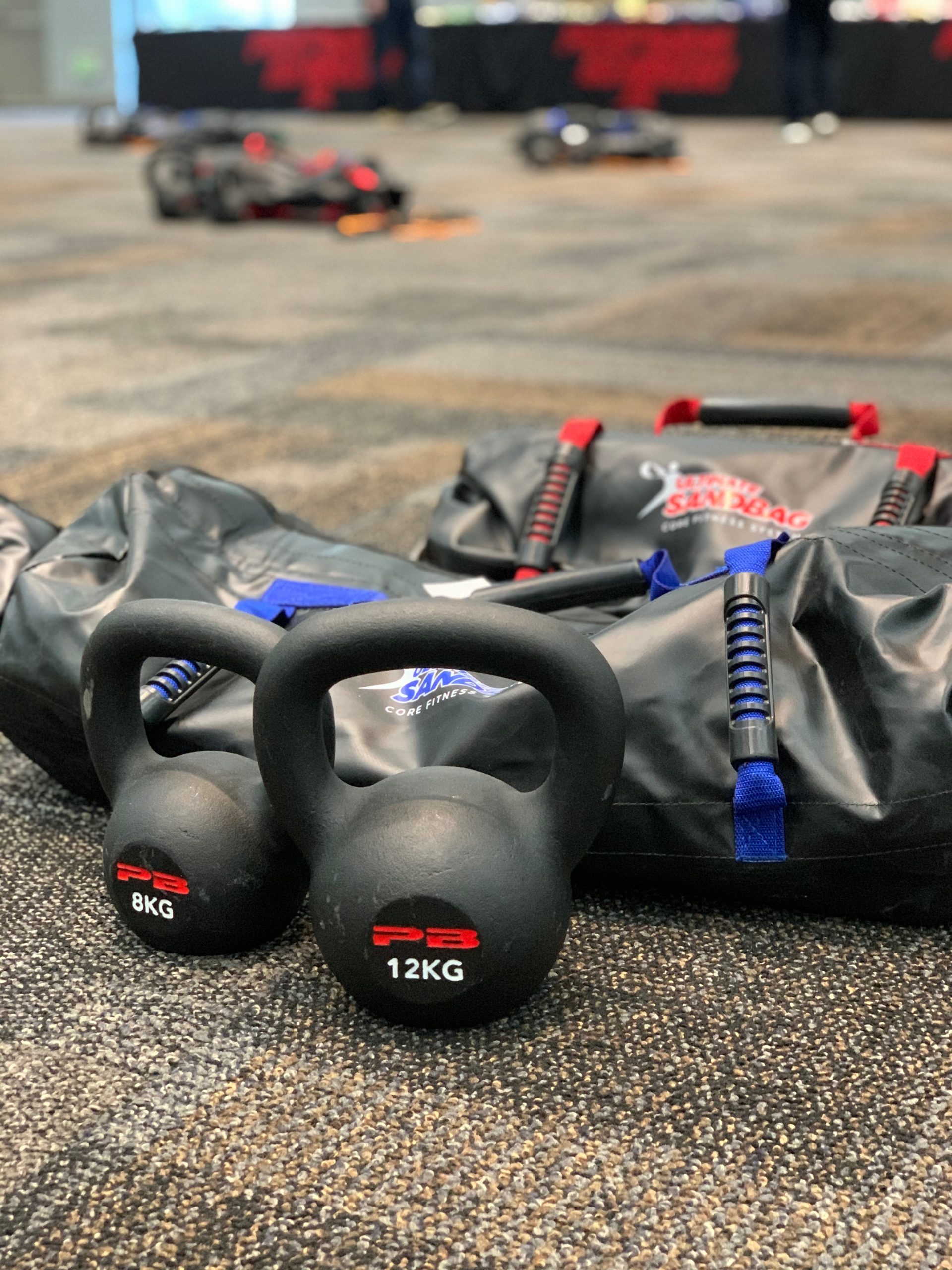Strength Training Or Cardio For Fat Loss
2025-10-10
Strength training or cardio, that is a favorite debate for social media, but I think is often asking the wrong question. What is really at the heart of such a question that will have people arguing endlessly for days?
I believe it is, “what is the best use of my time?”
This is a valid question as the biggest obstacle people report in starting or staying with a fitness program is time. Too often, people debate fitness topics without addressing the fact that people don’t have endless time and energy to train. Giving them more thoughtful answers to the actual question can lead to much better results and adherence.
The reality is you should do both strength training and cardio (aerobic) work. What we should thinking about is how can we optimally use them in a real world situation with clients and even ourselves.
I believe the answer lies in circuit based training (we can explain how this can be modified for more busy gym situations) and whole body based. This in essence creates a form of high intensity interval training (HIIT).

Before I show you easy it can be to accomplish this goal, let’s debunk a few myths that get people stuck on using this very effective and simple strategy.
Myth: You need an “aerobic base” to use more high intensity forms of strength training and cardio.
Fact: There is plenty of research like this 2024 paper that says the reality so well, “high-intensity interval training (HIIT) has been reported to improve maximal aerobic capacity and exercise performance, achieve higher training effects with shorter training periods, and produce maximal cardiorespiratory improvement similar to continuous training.”-PMID: 38529482
We both build aerobic benefits and get other more unique benefits from using HIIT which also requires less training time which is a win for both our fitness an time goals.
Myth: If you are starting a fitness program you can’t do HIIT yet.
Fact: Yes, you should ideally get checked out by your doctor first especially if you have any health issues before you not only participate in HIIT but any fitness program. Assuming you do not have any contraindications though, HIIT has been shown to be used very effectively for beginners, even those that are quite de-conditioned as this 2017 paper simply concludes..
“Training at high intensity is superior to improve cardiopulmonary fitness and to reduce %body fat in adults with obesity compared to traditional exercise.”-PMID: 29071102
How hard we go and how we organize the program is definitely key in building success, but it should be something we aim to implement.
So, yes, we can use HIIT from day one with a variety of populations and it can be a huge time saver for us. It doesn’t mean that every form of physical activity that we perform needs to be HIIT based but for the majority of my clients, the 2-3 times a week they would go to the gym we needed to optimize that time. This did mean we used a model of strength training with HIIT that is very effective.
How Do We Do It?
I’m going to lay out both an ideal way you can create such workouts as well as address the workouts for those in more busy gyms.
Typically, we are going to do a warm-up for about 10-15 minutes then perform a circuit of about 6 exercises (this can be modified depending upon time as well). The exercises are going to be based upon the 7 foundational movement patterns (squat, hip hinge, lunge, push, pull, and rotation). I know some exercises may seem hard to categorize (I’ll address that as you don’t have to be perfect) but we want to avoid using too much of the same movement pattern in the workouts.
Considerations we have in creating these workouts are things such as someone’s fitness level, injury history, and proficiency at specific movements. We want to place the exercises that require the most balance, complexity, and power development earlier in the workout even if they are using lighter loads.
Last part, while you can use this model with any training tool I for years focused on using kettlebells, bands, medicine balls, suspension trainers, and Ultimate Sandbags. Not because I was trying to make any specific statement, but they offer me the greatest versatility, adaptability, and feedback to my clients to get the benefits we were trying to achieve. So, you will see a focus on using such tools.

Beginner HIIT Strength Training Workout:
-Low Box Front Loaded Ultimate Sandbag Step-up x 6-8 right (lunge pattern)
-One Arm Supported Kettlebell Row x 8-10right (upper body horizontal pull, resisted rotation, hip hinge)
-Go Left on the above exercises then proceed to the next series
-Kettlebell Goblet Squat x 6-8 (squat pattern)
-Split Stance Band Horizontal Presses x 8-12 (horizontal press, resisted rotation, lunge)
Now, there may be some questions in the above example so let me address them….
How long do people rest between exercises?:
Typically we aim for about 30 seconds but in real world application that is usually just going to the next exercise and by the time you set-up, you are ready to go.
There are only four exercises and you said six, why only four?:
I didn’t want to confuse people by saying 4-6 yet, but here is the reason why that is my aim. When we start doing exercises that have one side predominatingly working, it is A LOT more work to do both sides than if you do more of a bilateral lift.
For example, people often find doing 6-8 lunges on each side far more fatiguing than doing one set of 8-10 of squats. In order to manage fatigue and let them work at a good level of intensity I like to split up the sides which creates more overall work and time being done. The benefit is the quality of work I usually achieve is much higher.

Since people tire more easily and it takes more time, in such cases I may only use 4 exercises in the workout but clients don’t complain. This was meant to be a beginner workout which also means I need to be careful about volume of work as well. Many beginning clients find between a good warm-up (we use a lot of our Myofascial Integrated Movement & Restoration drills in warm-ups) and this type of workout, they have done A LOT of work. My goal is not to paralyze them with soreness and make them not want to come back. We aren’t going to reach their goals in one workout and we need to build up a fitness level where they can tolerate higher levels of workloads.
What if I’m in a busy gym and I can’t go through the full circuit with losing my space or equipment?:
This is a common question I receive and I’ve had this issue as a coach and gym goer myself. The best bet is to split up your workout into supersets (two opposing exercises) that focus on one being more of an upper body based movement and the other more of a lower body based movement. The key here is to try to avoid too much of competing exercises. What do I mean?
I wouldn’t pair a bent row, for example, with a deadlift or kettlebell swing because that is a lot for people with their low back fatigue. I also wouldn’t aim to have a deadlift and pull-up paired together because grip can become the limiting factor quickly. Looking for those competing exercises is key. It doesn’t mean you can’t do them in the same workout, but I would not pair them together.
For me, creating really effective and time efficient programs is one of the reasons that I had clients that would on average stay with me a decade or longer. That’s pretty unusual in our industry and the biggest compliment my clients could give me. However, I think anyone can put together such training programs like I shared.
If you are interested in more content like this, let us know and I’ll keep with how we can progress some of these ideas. If you want a deep dive, I hope you will join us for our next CEU online masterclass. Our “Why Fitness Is Failing Fat Loss” class is going to have more great information like this and for the next two days you can still save 20% with code “coach20” HERE
© 2025 Ultimate Sandbag Training. Site by Jennifer Web Design.







